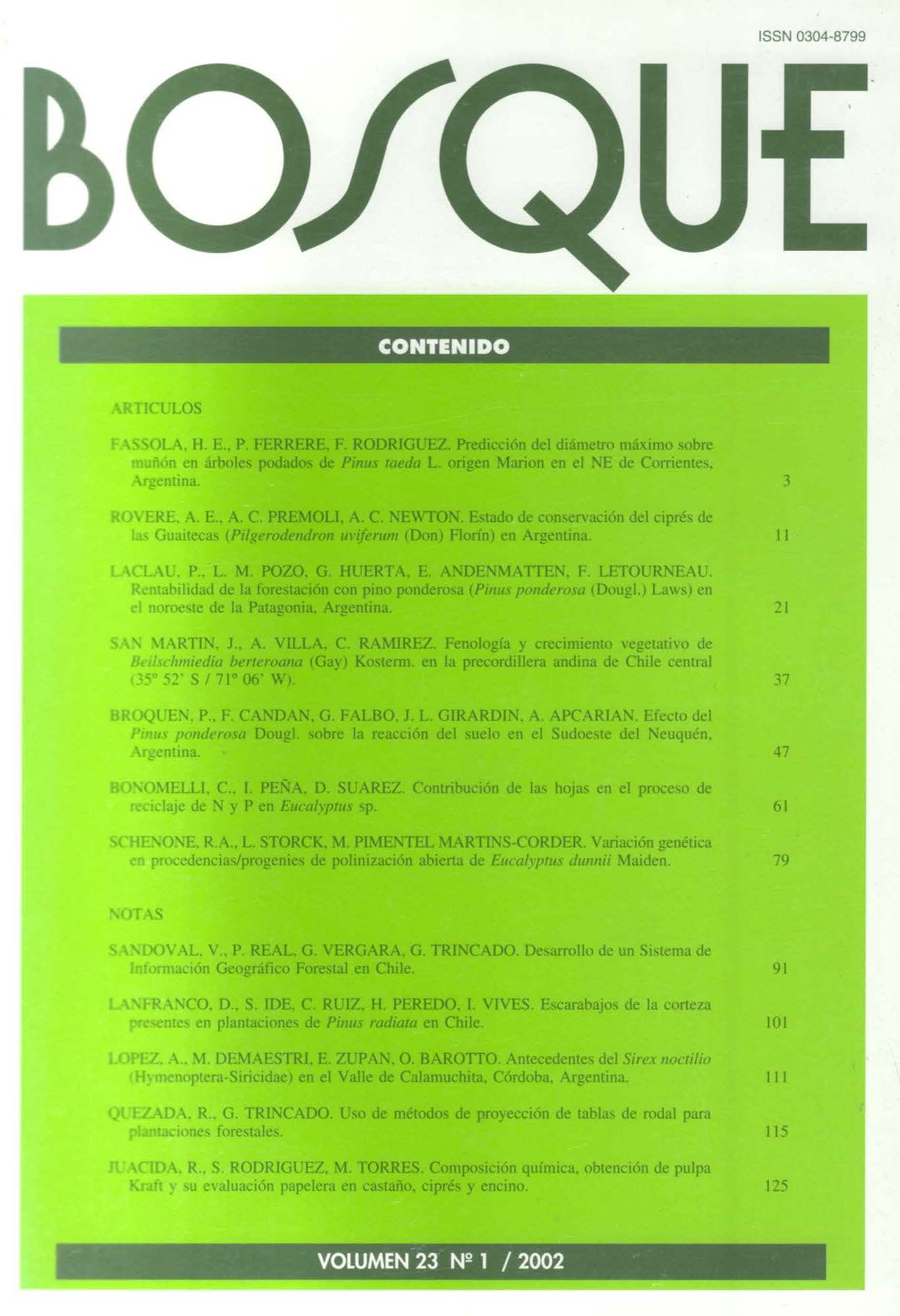Use of stand table projection methods in forest plantations
Main Article Content
Abstract
Two algorithms for stand table projection of forest plantations are described in a theoretical form. The analyzed algorithms correspond to the proposals of Nepal and Somers (1992) and Cao and Baldwin (1999). Together with the theoretical description, some information is given about statistical criteria used for the comparison and evaluation of the algorithms. These corresponded to the KolmogorovSmirnov (KS) Test, used to compare cumulative frequency distributions and an error index named 'relative discrepancy', which permits the comparison of the common proportion for both distributions (observed and estimated). A numerical example is included to demonstrate the practical application, which considers empirical data gathered from permanent plots of Eucalyptus nitens According to the evaluation carried out with the KS Test, both methods produced, with no significant difference (α = 0 01), similar results to the future diameter distribution. Similar error index values were also determined for a projection period of two years.

